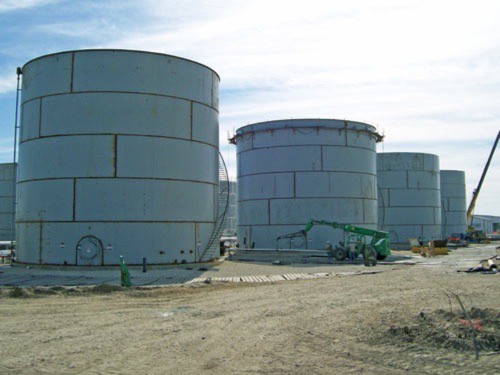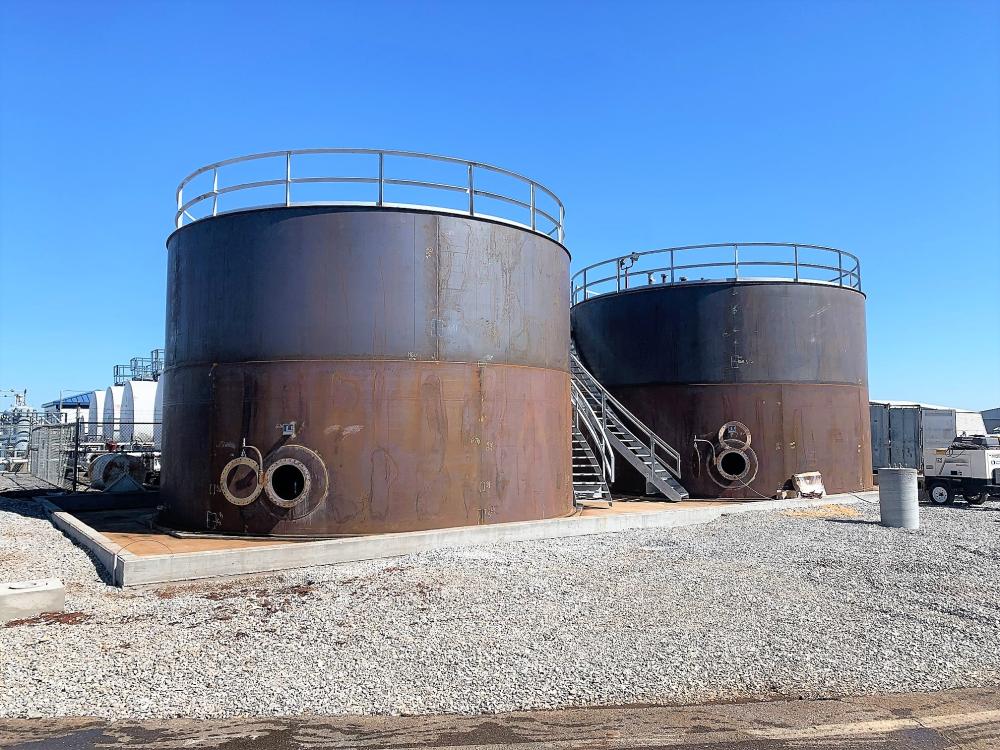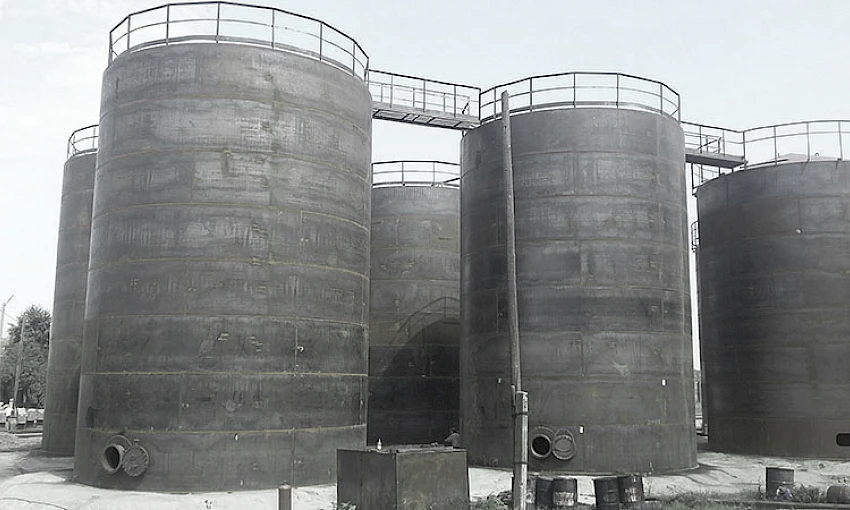The Major Role of API 650 Welding Inspection in Quality Assurance
Wiki Article
A Step-by-Step Consider the Setup Refine of Welding Assessment Techniques
Welding assessment is a critical process that guarantees architectural stability and safety. The setup of assessment strategies includes several methodical steps, each indispensable to attaining reliable outcomes. From planning and tool selection to performing non-destructive and visual examinations, each stage needs cautious interest. Comprehending these procedures can substantially enhance quality assurance in welding projects. What challenges develop in implementing these methods, and exactly how can they be successfully attended to?Comprehending the Significance of Welding Assessment
Welding evaluation is an important component of guaranteeing structural honesty and safety in building and construction and manufacturing procedures. This technique involves assessing welded joints for flaws, ensuring that they fulfill particular standards and laws. By systematically evaluating weld quality, assessors can recognize concerns such as fractures, voids, and insufficient blend, which can endanger the toughness and durability of structures.The relevance of welding examination extends beyond immediate safety and security worries; it helps avoid costly failures and possible risks in the long-term. Effective assessment techniques foster conformity with industry criteria, thereby boosting the general integrity of welded elements. On top of that, a durable inspection process contributes to keeping the track record of manufacturers and home builders, as it assures customers of the high quality of their projects. Inevitably, recognizing the importance of welding evaluation is essential for promoting secure building practices and ensuring the long life of necessary framework and products.
Picking the Right Tools for Assessment
When selecting the appropriate tools for evaluation, it is necessary to ponder the specific requirements of the welding process and the products involved. Various inspection techniques, such as visual, ultrasonic, and radiographic testing, require distinctive tools tailored to their one-of-a-kind needs. For aesthetic inspections, devices like amplifying calipers and glasses are critical for assessing weld high quality. Ultrasonic testing requires customized equipment efficient in transferring and obtaining audio waves to detect inner imperfections. Radiographic screening, on the other hand, makes use of X-ray or gamma-ray resources along with delicate film or electronic detectors to reveal variances.
Furthermore, personal safety tools (PPE) is important to ensure the security of assessors throughout analyses. Picking the right tools not just boosts the precision of examinations however additionally adds to the total integrity and safety and security of the welding job. A thorough understanding of readily available tools and their applications is important for reliable welding examination.
Preparing for the Evaluation Process
Prior to initiating the evaluation procedure, it is vital to establish a complete plan that details the scope and objectives of the analysis. This plan ought to consist of certain criteria that define what makes up appropriate quality in the welding job being examined. Determining the pertinent codes and criteria is essential, as they will certainly direct the evaluation requirements and methodologies.Additionally, workers associated with the examination has to be sufficiently educated and licensed in welding examination techniques to guarantee dependability and accuracy. A list can be valuable in arranging the numerous facets of the examination, varying from tools readiness to environmental conditions that might influence the evaluation.

Logistical considerations such as scheduling, readily available resources, and interaction between group members need to be dealt with. By preparing systematically, assessors can improve the performance of the assessment and guarantee that all essential variables are duly thought about prior to waging the inspection itself.
Carrying Out Aesthetic Inspections

Carrying out aesthetic assessments is an essential step in the welding inspection procedure, calling for mindful preparation to ensure effective analysis. Inspectors should recognize with vital flaw indications that can signal potential issues in weld high quality. By concentrating on these elements, one can improve the total dependability of the assessment outcomes.
Planning For Visual Evaluation
Aesthetic assessment functions as a crucial primary step in the welding examination procedure, ensuring that any prospective flaws are identified early (API 650 Welding Inspection). Proper preparation is necessary for reliable aesthetic assessment. Examiners need to start by evaluating appropriate paperwork, including welding treatments and specs, to recognize the project requirements. They should collect needed tools, such as magnifying glasses, flashlights, and proper individual protective tools (PPE) A detailed assessment of the examination area is crucial; examiners ought to confirm it is free and tidy of obstructions. In addition, it is very important to develop optimal illumination problems to boost exposure of welds. By taking these preparatory actions, assessors can create a setting for determining disparities and guaranteeing the honesty of the welded structuresKey Defect Indicators
A thorough understanding of key defect indications is crucial during visual evaluations to ensure the top quality and safety and security of welded joints. Inspectors should concentrate on particular indications such as fractures, porosity, damages, and incomplete combination. Cracks may show up as sharp lines and can jeopardize structural integrity. Porosity manifests as tiny openings that can damage weld strength. Undercuts, which are grooves along the weld edge, can result in stress focus. Incomplete blend suggests that the weld metal did not appropriately bond with the base material, leading to a weak joint. By systematically identifying these flaws, examiners can ascertain conformity with market requirements and boost the general dependability of bonded frameworks, eventually adding to much safer operational problems.Carrying Out Non-Destructive Examining Methods

Countless non-destructive screening (NDT) methods are important to ensuring the stability of welded structures without endangering their capability. These methods allow inspectors to review weld high quality and find issues without triggering damage to the materials being tested. Typical NDT strategies include ultrasonic screening, radiographic testing, magnetic particle screening, and color penetrant screening. Each technique offers a details objective, addressing various sorts of problems such as fractures, porosity, or insufficient fusion.
Executing NDT methods requires an organized method, starting with selecting the ideal technique based upon the products and the nature of the weld. Training workers in these techniques is important for exact outcomes. In addition, establishing clear treatments and requirements assurances consistency throughout the inspection process. By integrating NDT right into the welding examination operations, organizations can enhance the reliability of their products while reducing prospective risks associated with architectural failings. This aggressive approach ultimately adds to maintaining safety and security and top quality standards in welded constructions.
Assessing and documenting Examination Results
Reliable documentation and evaluation of evaluation outcomes are crucial parts of the welding inspection procedure. Exact records of evaluation searchings for offer as a recommendation for quality control and compliance with sector criteria. API 650 Welding Inspection. Inspectors must Visit Your URL use electronic systems or structured types to log details such as the type of weld, examination techniques employed, and any disparities identified throughout the examinationExtensive evaluation is essential once information is collected. This includes comparing results versus developed criteria to identify fads or persisting concerns. Analytical tools might be utilized to evaluate issues and evaluate their effect on overall weld quality.
In addition, reliable interaction of findings to relevant original site stakeholders is crucial. Summaries and reports ought to be concise and clear, highlighting vital insights and referrals for restorative actions. By methodically assessing and recording examination outcomes, organizations can cultivate continual enhancement in welding methods and improve item honesty.
Frequently Asked Concerns
What Credentials Are Needed to Become a Welding Assessor?
To come to be a welding assessor, one typically needs relevant certifications such as AWS CWI, along with experience in welding practices, expertise of welding codes, and efficiency in evaluation techniques to ensure quality and safety requirements.Just How Commonly Should Welding Inspections Be Performed?
Welding evaluations should be performed consistently, typically after each weld is finished, and occasionally throughout jobs. Elements such as job intricacy, market requirements, and regulative needs can affect the regularity of these evaluations.What Is the Cost of Welding Assessment Providers?
The cost of welding evaluation solutions varies significantly based upon aspects such as task area, complexity, and size. Commonly, costs range from $100 to $150 per hour, with extra fees for specialized testing and certifications.Are There Certifications for Welding Inspectors?
Yes, there are various qualifications for welding assessors, including those supplied by the American Welding Society (AWS) and the International Institute of Welding (IIW) These qualifications ensure examiners possess the needed skills and understanding for efficient analyses.
Exactly how Do I Choose an Evaluation Company?
To choose an assessment company, one should review certifications, experience, market online reputation, and consumer evaluations. In addition, comparing solution offerings and pricing can assist assure the selected copyright satisfies certain project requires properly.Additionally, employees entailed in the examination has to be adequately trained and licensed in welding examination strategies to assure integrity and accuracy. Conducting aesthetic inspections is a necessary action in the welding assessment procedure, requiring mindful preparation to ensure effective assessment. Aesthetic evaluation offers as a crucial first step in the welding evaluation process, assuring that any kind of possible problems are recognized early. Efficient documentation and visit the website analysis of inspection results are crucial elements of the welding assessment procedure. Welding examinations must be conducted consistently, typically after each weld is finished, and regularly throughout tasks.
Report this wiki page